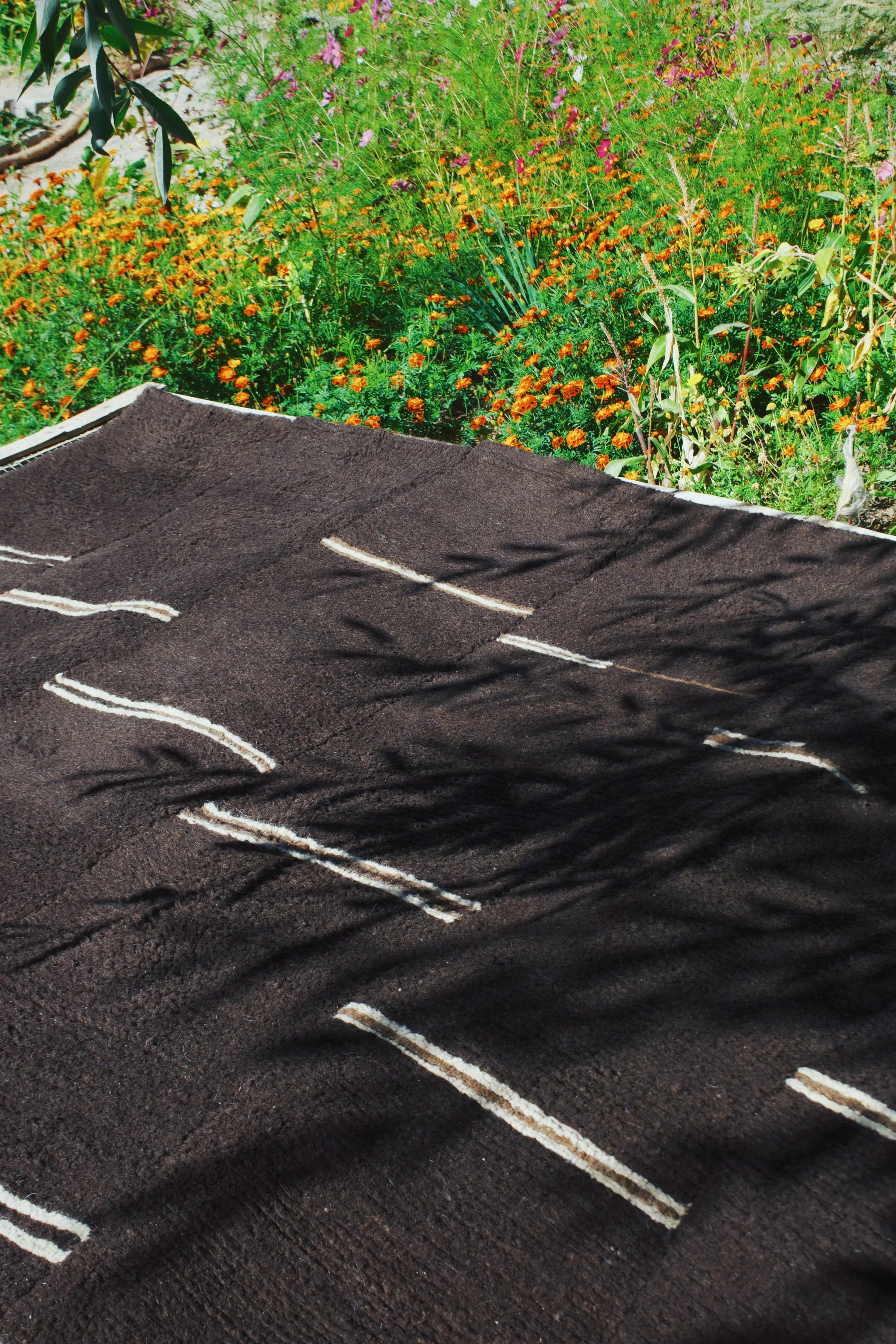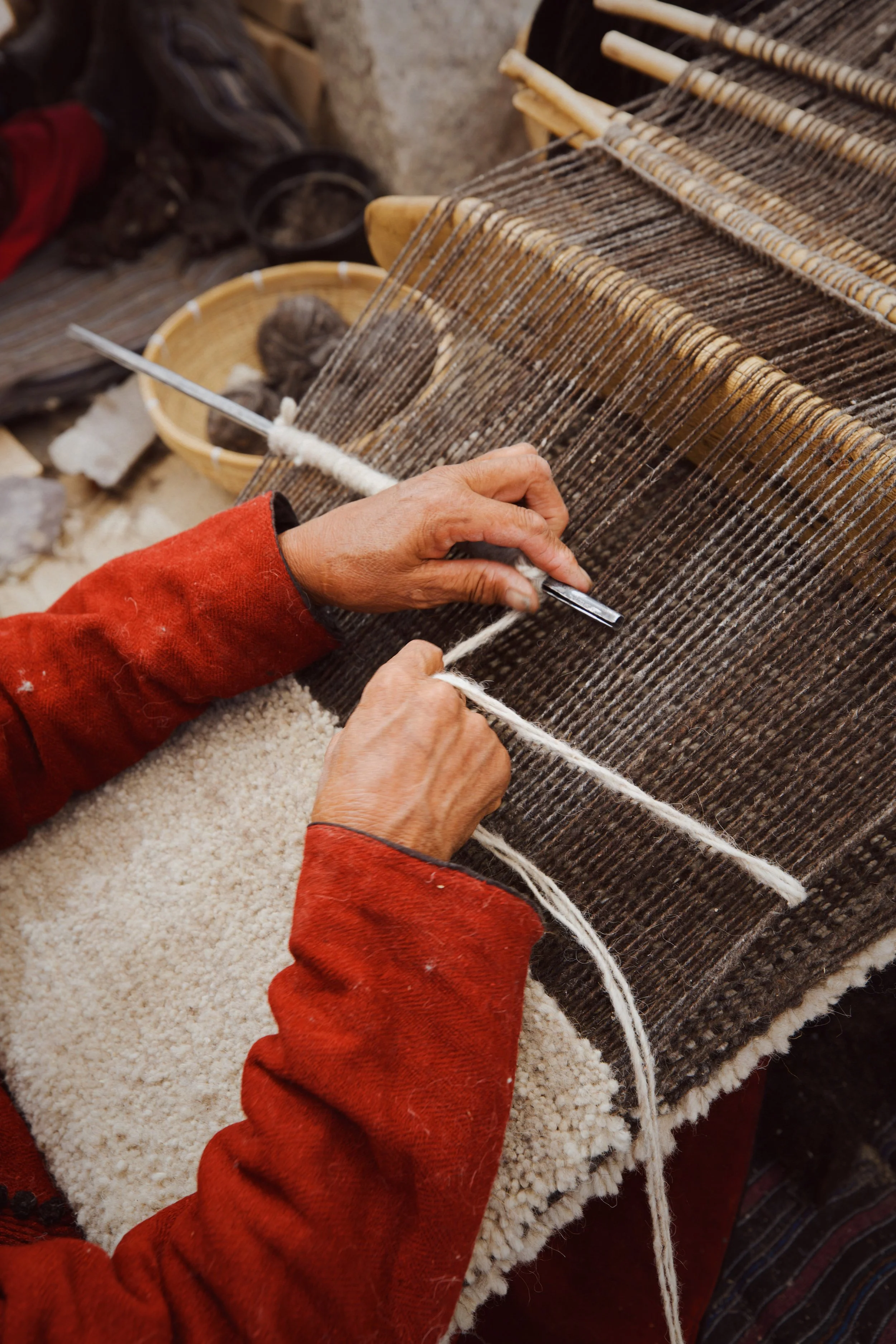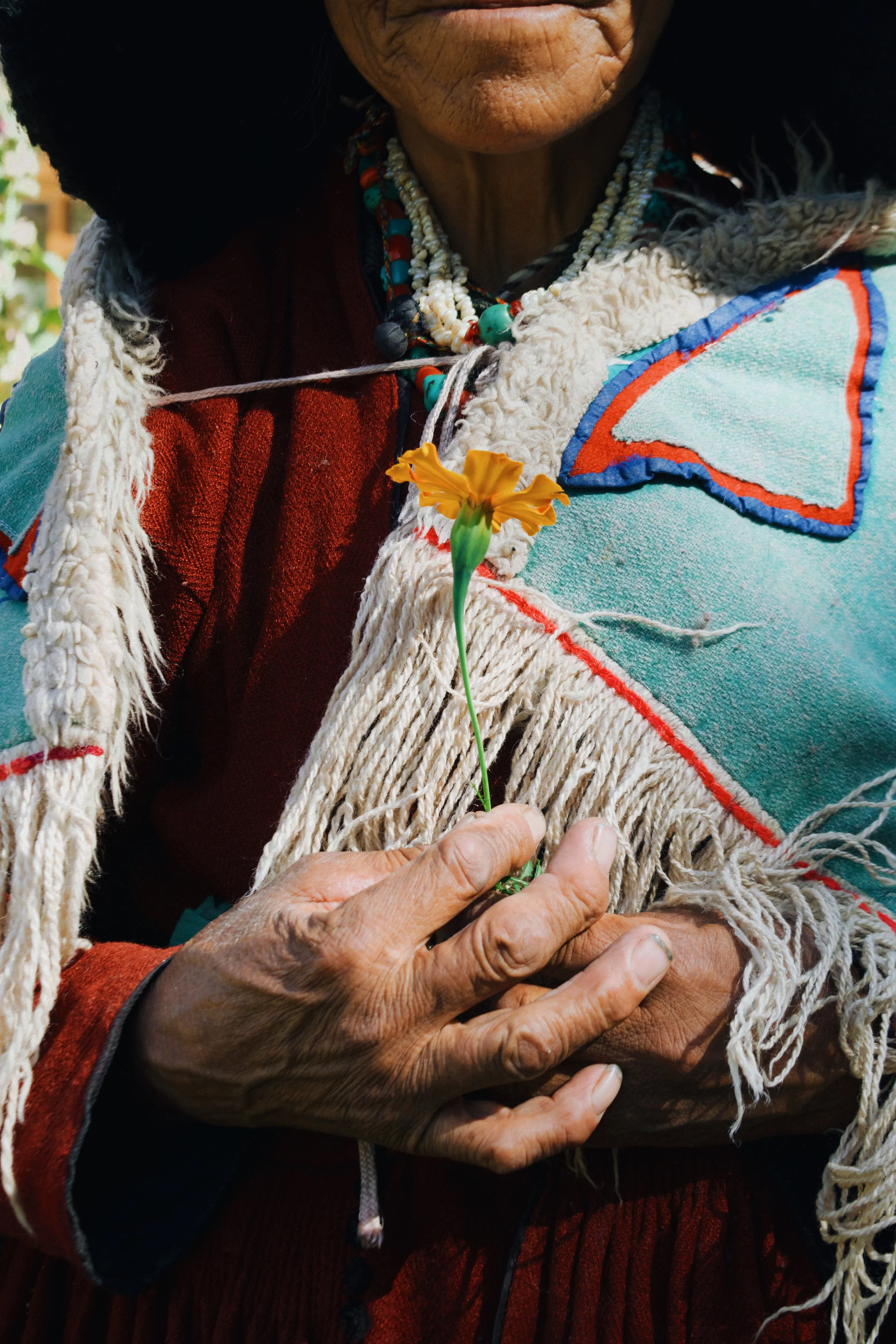Partner Spotlight: We are KAL
We set down with Angtak and Catherine, founders of KAL and our partners in Ladakh, India, to learn more about their how they infuse the slow nature of textile practices into their rural life in the Himalayas.
Photos by Nabina Nazar.
How did We Are KAL begin? Can you take us back to that first encounter in Ladakh in 2014 and share how the idea for the project took shape?
We met on Catherine’s very first wool sourcing trip when Angtak was helping out his brothers who are nomads and who Catherine had stayed with before - this was in July 2014. As Catherine’s Hindi was quite broken at the time and her Ladakhi language skills were very little, Angtak was asked to be the translator to facilitate the raw wool deal. His brother suggested that we exchange numbers to join forces again the next year and this is where our wool adventures and life together started.
At the very beginning, Catherine simply had the idea in mind to create textiles from scratch, understand the supply chain and truly get an insight into the raw materials which are used. It wasn’t so much about the final product back then but rather the origin of it.
What drew you both to textiles as a shared language?
For us textiles are a part of cultural communication: the textiles which are created somewhere are made in a certain way because of how a community lives and how it is impacted by the elements around. This can be seen by the choice of raw material, tools and final creations. This is how it is not just about craft but about the entire ecosystem a community lives in which makes textiles such an interesting field.
Can you walk us through your process with the wool? From sourcing to spinning and weaving, what does a typical project look like and how does it evolve?
It all starts with sourcing the wool from the nomadic community. This we do over the summer each year, so in the period of June until September. Once we select the raw wool we then have to sort it and start the washing and drying. After this it is further graded into the qualities which are different for carpets, knits, accessories etc.
Once the fiber is clean then it is carded in a machine. This means the fiber is combed and made ready for handspinning. The carded wool is then spun by our team with the traditional spindle and woven into a textile on the backstrap loom. If we use natural dye, then the yarn is dyed before weaving.
What role does tradition play in your designs? How do you balance honoring heritage techniques with exploring new ideas?
For us the essential practice is to always maintain the technique and lay our focus on that. We do explore a few new things such as mixing techniques and changing sizes or coming up with a new product using a traditional textile. However, looking back we think that by simplifying designs we are able to put more attention to the fiber and the technique.
How do your personal creative practices feed into We Are KAL? Catherine, how does your photography or dye work influence the way you approach textiles?
As both analogue photography and natural dye are very slow practices it helps me to understand how to treat handspun and handwoven textiles as well. That it is such a long process and is impacted by so many things we are in no control of.
Natural dye gives me inspiration for shades and textures and photography gives me the opportunity to step back and look at our work with distance. Whenever I receive a developed film with photos of our work I feel so lucky to be doing what we are doing, in the moment often we do not realize the privilege.
How have the weavers and communities you work with shaped the project?
What have you learned from collaborating with nomadic craftspeople?
Definitely a lot! Theoretically one can do a lot of things and they might all work in a fictive space. However, in reality it all comes down to the people you work with. We have been so lucky to still work with the same people who we first started with in 2014/2015. Of course, we also welcomed many new important team members but having a solid base from the beginning has made everything easier for us. What we have learnt from our team and also the communities we work with is to not force anything which is not there and just go with the flow.
Why was building a home base in Ladakh important for you?
Having a home and a work base was something we longed for for so long. Bringing everything together in one place, being able to show what we make was so important to us. If you just carry around fragments of your work, it doesn’t give it justice. The choice for Ladakh was natural as for both of us it was the only place we could imagine living in India and is closest to our community. We are very much connected to this land here, it shows in our rhythm each year when a lot of the production slows down in the winter and summers are very busy.
How do you define sustainability in your work? Beyond materials, how do you stay committed to a slow and ethical pace?
It happens automatically to us I think. Taking the weather for example, the culture of the team and their practices and also our very own needs give our work a very natural pace. We have always wanted to build our business around the type of lifestyle that we want to live and it has worked quite well I would say!
What does the name “KAL” mean to you today? As you look back and also ahead, how does the idea of “yesterday, tomorrow” guide your vision?
So much wisdom lies in the past. Especially when it comes to the simple things in life, those connected to nature and low in resources. We are often overthinking everything in this day and age and at least I feel like things are only getting more complicated and harder to grasp. This is why I seek so much inspiration from techniques and practices from the past.
But of course, our way is forward. It is us who will shape tomorrow’s past so this is why we have to look ahead and create so that yesterday’s crafts and ideas can still exist tomorrow.









